Sierra Nevada Takes Steps Toward Orbital Space Plane Flight
For flight controllers working the Dream Chaser flight test last week, the moment of truth came as the 30-foot-long (9 meters) spacecraft descended to 200 feet (60 m) over Rogers Dry Lake bed in California. The spacecraft's landing gear deployed and locked into position exactly as planned.
The captive-carry test — in which the spacecraft was suspended under a Columbia 234-UT helicopter by a 200-foot (61-meter) long cable for the entire flight — was a far cry from the last time Dream Chaser had taken to the skies over Edwards Air Force Base nearly four years earlier. On Oct. 26, 2013, during an automated approach-and-landing test designed to simulate the last few minutes of a return from orbit, the uncrewed vehicle's left landing gear failed to deploy. The plane suffered damage as it skidded off into the desert scrub brush.
That was a serious blow to the Sierra Nevada Corp., which was locked in a fierce battle with Boeing and SpaceX in the third round of competition to obtain a contract for NASA's Commercial Crew Program. Eleven months after the crash, Dream Chaser was eliminated from the program, as the space agency awarded contracts to Boeing and SpaceX worth $4.2 billion and $2.6 billion, respectively, to carry U.S. astronauts to the International Space Station (ISS). (The first crew flights are scheduled for 2019.) [Photos of Dream Chaser, America's New Space Plane]
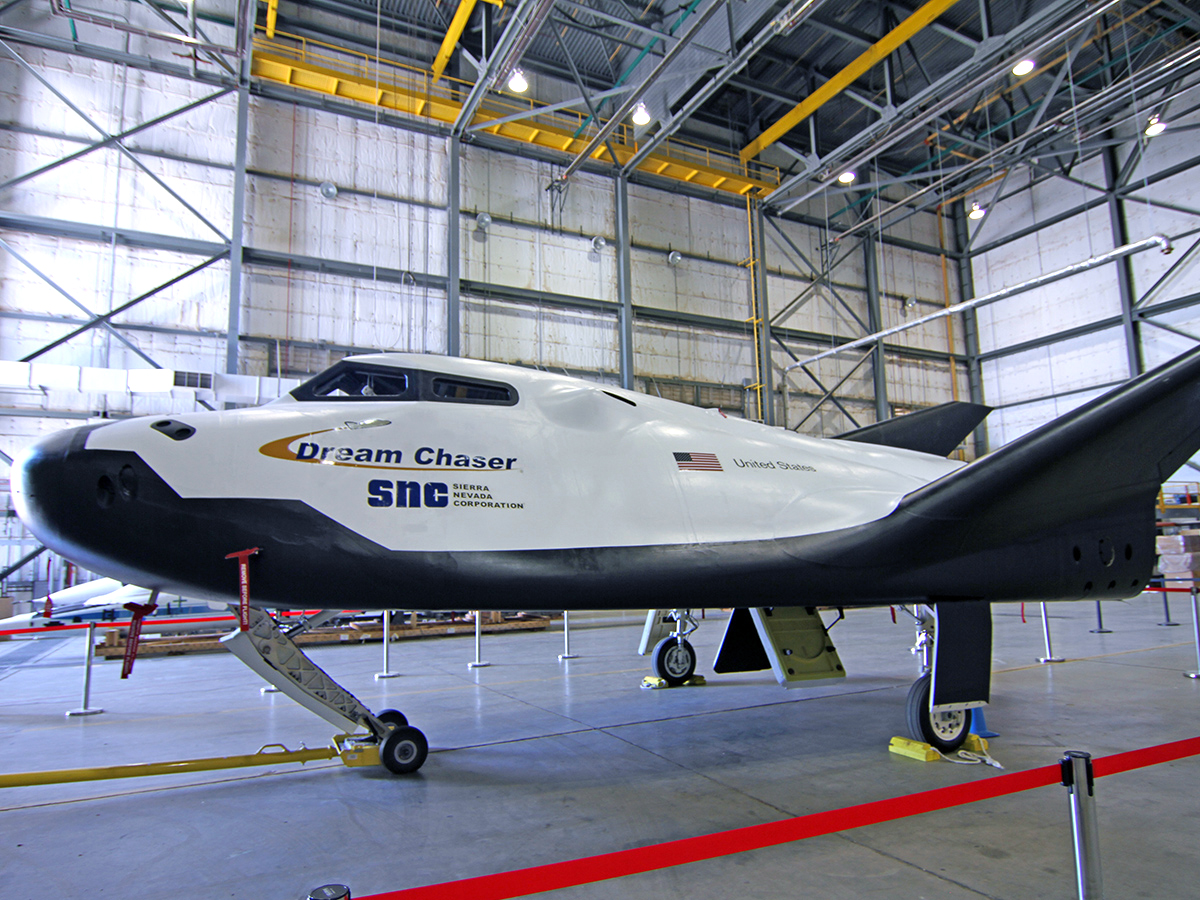
Sierra Nevada appealed the decision with the U.S. Government Accountability Office, but lost. Although it appeared that Dream Chaser might never make it to orbit, NASA breathed new life into the program when the agency awarded Sierra Nevada a contract to deliver cargo to the International Space Station, along with SpaceX and Orbital ATK, as part of the second round of Commercial Resupply Services (CRS2) contracts awarded to commercial companies by NASA.
Last week's test allowed engineers to test an updated set of electronics used by the spacecraft that are specifically designed for orbital flights, said Steve Lindsey, Sierra Nevada vice president of Space Exploration Systems, speaking to a group of reporters following the captive-carry test. The avionics were different from the ones used on the approach-and-landing and three captive-carry tests conducted four years ago, he added.
"All the avionics worked exactly as expected," Lindsey said. "We obviously have to look at the data. We have reams and reams of data we've got to go look at. But, [based on] what we saw [in] real time, everything was working exactly as expected."
"We may need to make some software tweaks and look at our hardware and make sure all of our hardware operated," he added. "It looks like it operated great, but [we] still need to go through all of the data and make any final updates."
Get the Space.com Newsletter
Breaking space news, the latest updates on rocket launches, skywatching events and more!
If the data look good, Sierra Nevada will conduct a second captive-carry test from NASA's Armstrong Flight Research Center around the end of September, Lindsey said. An approach-and-landing test would follow later in the fall.
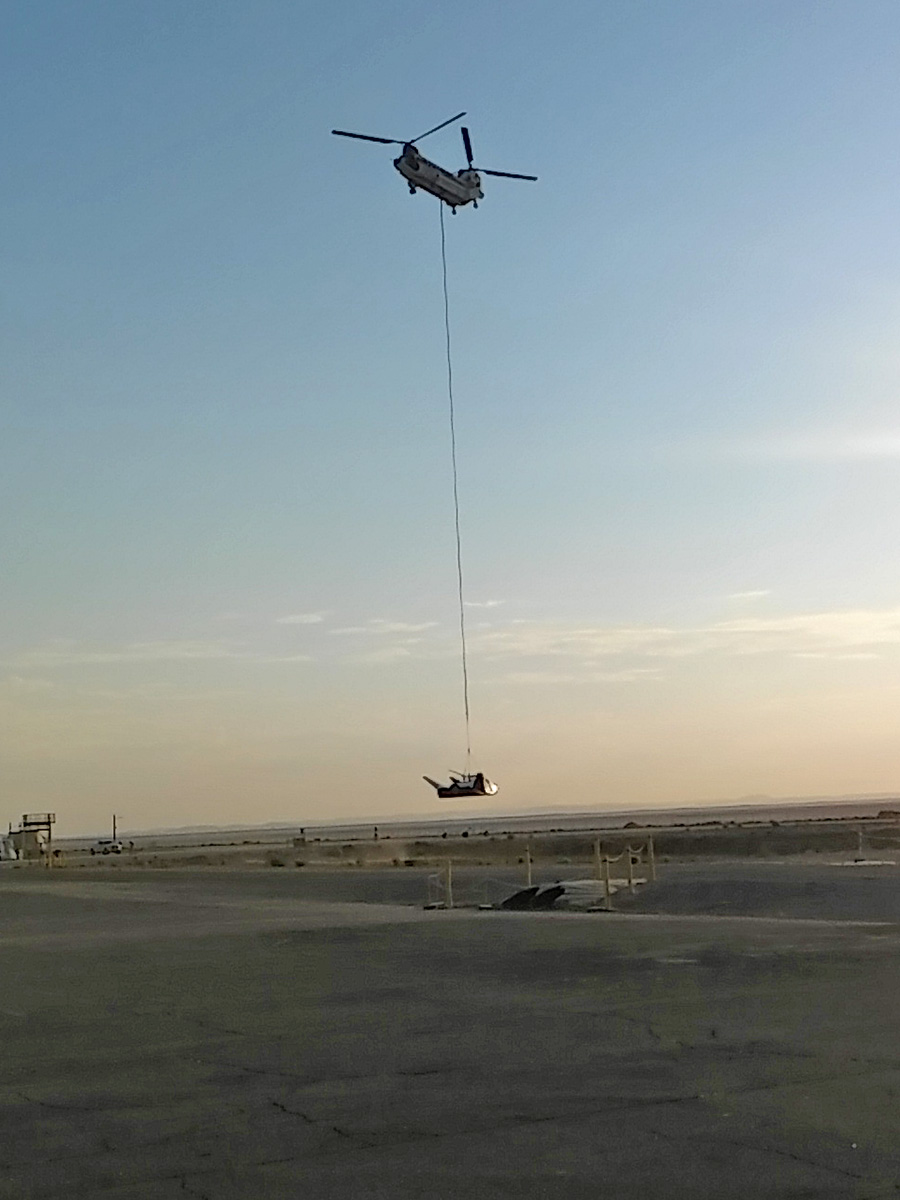
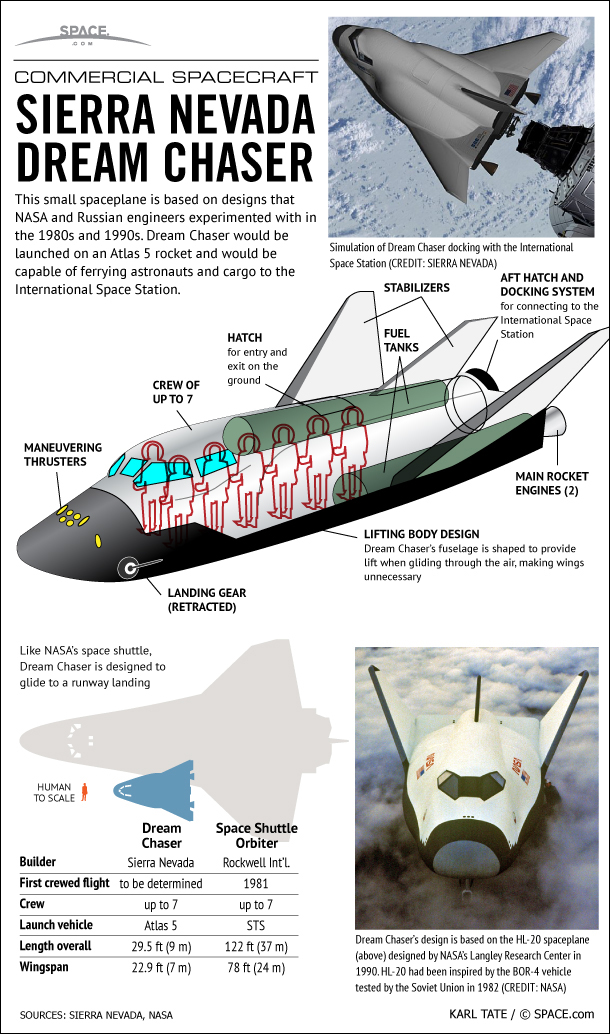
"We will fly when we're ready. We will not fly before that time, no matter what," he added. "So, we make sure the team is not under schedule pressure. We obviously are motivated to get this done as soon as we can. On the other hand, we're not going to do it until everything's right."
With one approach-and-landing test already completed, marred only by a landing-gear failure, engineers are hoping to complete the glide phase of testing with just one more free flight, Lindsey added.
The approach-and-landing test is a funded milestone under the Commercial Crew Integrated Capability (CCiCap) contract that Sierra Nevada has with NASA. Even though Sierra Nevada ultimately lost the commercial crew contract to Boeing and SpaceX, the company will still receive $8 million from the space agency once the flight tests are completed.
The CCiCap contract has been extended through 2022, and Sierra Nevada is continuing to work with NASA to qualifying Dream Chaser for human spaceflight. The agreement, which lists a series of eight milestones, is currently unfunded, which means the space agency is not paying Sierra Nevada for further work. [Sierra Nevada's Dream Chaser Space Plane (Infographic)]
Sierra Nevada's space station cargo resupply contract with NASA stipulates a minimum of six Dream Chaser flights between 2019 and 2024. NASA has not formally ordered any flights yet, but company officials said they are expecting Dream Chaser to fly its first mission to the station in 2020.
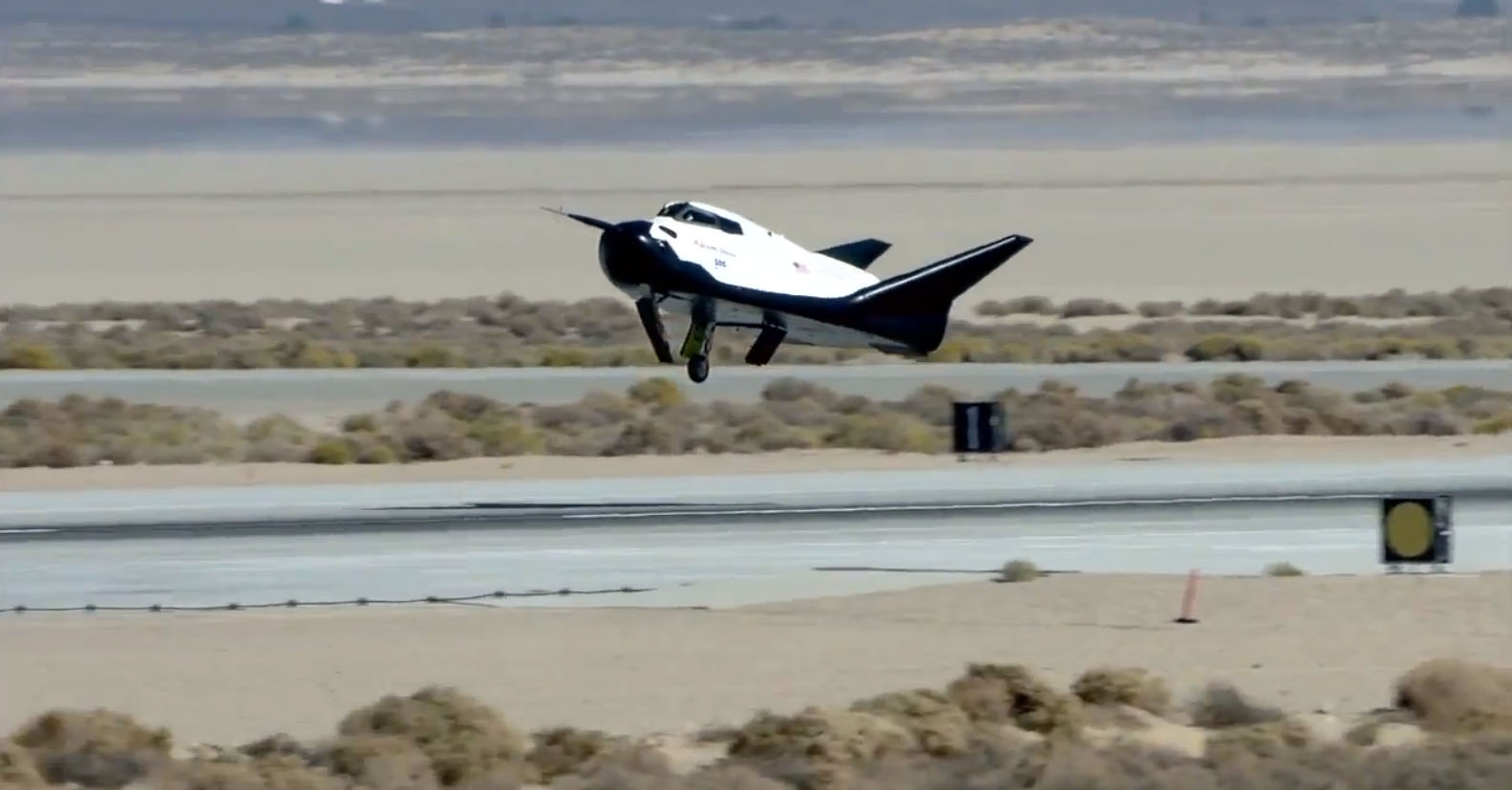
The Dream Chaser cargo vehicle consists of two elements: The main vehicle is a lifting-body spacecraft capable of re-entering the Earth's atmosphere and gliding to a landing on a runway in the same way the space shuttle did. This portion of the spacecraft would carry pressurized cargo back to Earth. The other component is a disposable payload module for unpressurized cargo that will separate from the main vehicle before re-entry and burnup in the atmosphere.
Dream Chaser will be able to deliver up to 5,500 kilograms (12,125 lbs.) of pressurized and unpressurized cargo to the orbiting laboratory. The spacecraft will be capable of returning up to 1,750 kg (3,850 lbs.) of cargo to Earth. The expendable cargo module will be able to dispose of up to 3,250 kg (7,165 lbs.) of trash from the space station.
During return trips to Earth, the Dream Chaser will expose sensitive scientific payloads (and, perhaps one day, astronauts) to a maximum of only 1.5 times the force of gravity (1.5 g's), Sierra Nevada officials have said. This is far less than the 4 to 8 g's that astronauts experience when they make a ballistic return to Earth on Russia's Soyuz spacecraft, which lands under a parachute. SpaceX's Dragon and Boeing's CST-100 Starliner vehicles are also ballistic spacecraft that will land by parachute.
For its first two CRS2 flights, the Dream Chaser craft will be launched aboard a United Launch Alliance (ULA) Atlas V rocket from Cape Canaveral, Florida, Lindsay said. Upon returning from space, the Dream Chaser vehicles will glide to landings at the former Shuttle Landing Facility at NASA's Kennedy Space Center.
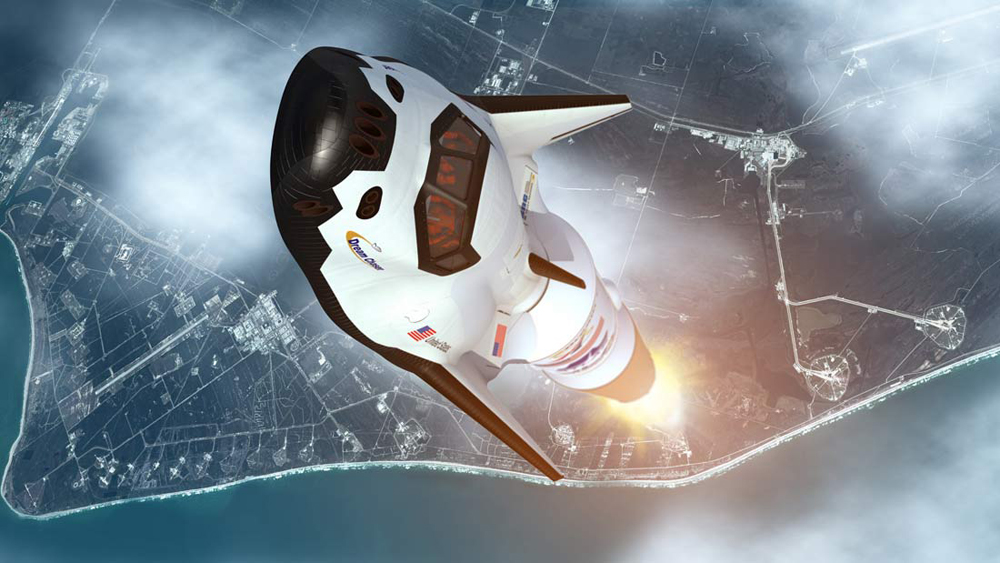
The spacecraft's runway landings will also give scientists rapid access to experiments and samples that are returning from the station (unlike with some cargo vehicles that fall into the ocean, or the Soyuz spacecraft, which lands in a remote part of Kazakhstan). Sierra Nevada has been working with Ellington Airport in Houston and Huntsville International Airport in Alabama to secure alternative landing sites for scientists in those locations who fly experiments to the station, Lindsay said. Landings in those locations would also expose members of the public to Dream Chaser, he said.
Lindsey said the company plans to put the Dream Chaser vehicle it is now testing in California in "flyable storage" after the approach-and-landing flight is completed later this year. That will preserve the option of upgrading the vehicle for human spaceflight in the future, he said.
"The structure was rated for people from the very beginning, and so we want to keep that as an option. ... Our intent, someday, is to go back to crew as well," Lindsey said. "How and when is TBD [to be determined]."
Follow us @Spacedotcom, Facebook and Google+. Original article on Space.com.
Join our Space Forums to keep talking space on the latest missions, night sky and more! And if you have a news tip, correction or comment, let us know at: community@space.com.
Douglas Messier is the managing editor of Parabolicarc.com, a daily online blog founded in 2007 that covers space tourism, space commercialization, human spaceflight and planetary exploration. Douglas earned a journalism degree from Rider University in New Jersey as well as a certificate in interdisciplinary space studies from the International Space University. He also earned a master's degree in science, technology and public policy from George Washington University in Washington, D.C. You can follow Douglas's latest project on Twitter and Parabolicarc.com.










